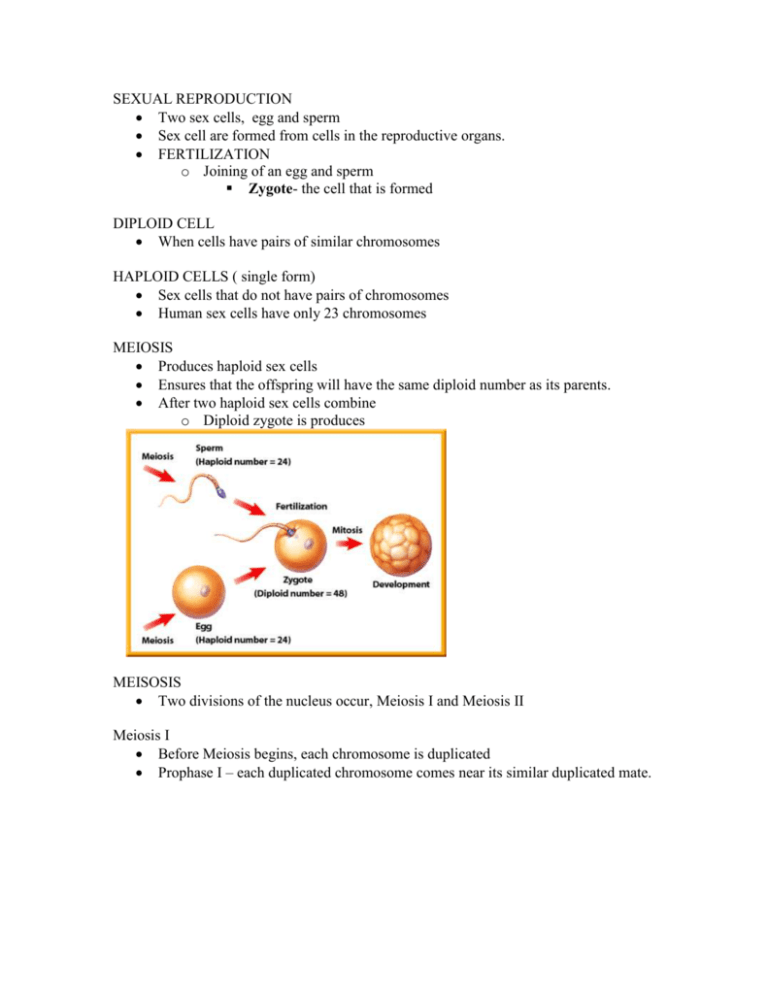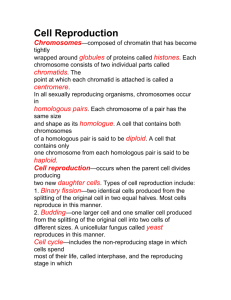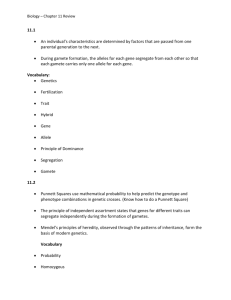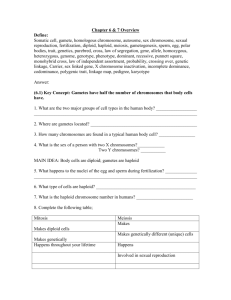SEXUAL REPRODUCTION
advertisement

SEXUAL REPRODUCTION Two sex cells, egg and sperm Sex cell are formed from cells in the reproductive organs. FERTILIZATION o Joining of an egg and sperm Zygote- the cell that is formed DIPLOID CELL When cells have pairs of similar chromosomes HAPLOID CELLS ( single form) Sex cells that do not have pairs of chromosomes Human sex cells have only 23 chromosomes MEIOSIS Produces haploid sex cells Ensures that the offspring will have the same diploid number as its parents. After two haploid sex cells combine o Diploid zygote is produces MEISOSIS Two divisions of the nucleus occur, Meiosis I and Meiosis II Meiosis I Before Meiosis begins, each chromosome is duplicated Prophase I – each duplicated chromosome comes near its similar duplicated mate. Metaphase I Pairs of duplicated chromosomes line up in the center of the cell Centromere of each chromatid pair becomes attached to the spindle fibers Anaphase I Two pairs of chromatids of each similar pair move away from each other to opposite ends of the cell. Telephase I Cytoplasm divides and two new cells form Each new cell has one duplicated chromosome from each pair. MEISOIS II Prophase II Duplicated chromosomes and spindle fibers reappear in each new cell. Metaphase II Duplicated chromosomes move to the center of the cell. Each centromere now attaches to two spindle fibers instead of one. Anaphase II Chromatid separate and move to opposite ends of the cell. Chromatids now are individual chromosome. Telophase II Spindle fibers disappear and nuclear membrane forms around the chromosomes. *Meiosis produces haploid sex cells. * Mistakes can produce sex cells with too many or too few chromosomes. * Zygotes with the wrong number of chromosomes may not grow normally.








